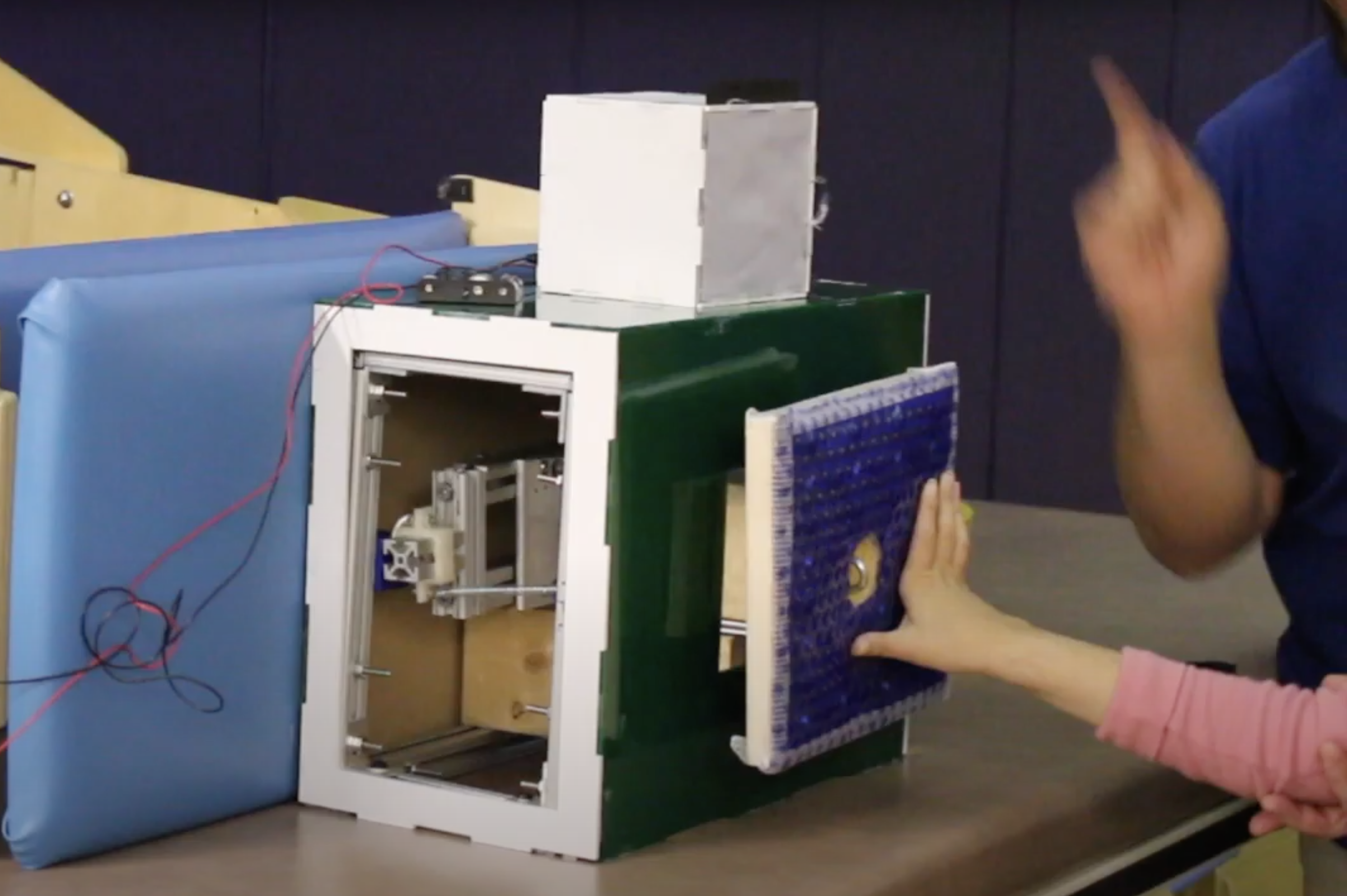As part of a human-centered design course, I helped build a tool to help adaptive physical education instructors teach children with disabilities basic motor skills, specifically pushing and pulling, through experiential learning.


As part of an interdisciplinary design team for my capstone project, we spent 8 weeks going from initial problem definition to functional prototype in a data-driven, iterative design process. After several iterations guided by tests and interviews with real users, we created Easy PEasy -- a tool that helps adaptive physical education instructors teach children with disabilities basic motor skills with experiential learning.


When I was in Elementary school, my favorite part of the day was gym class. However, for students at the WPSBC who have multiple profound mental and physical disabilities, gym class is used as a physical therapy class designed to develop their motor skills and is not just for fun because they don’t have the physical skills for everyday life.
Imagine pushing open a heavy wooden door. Now, imagine pushing open a light screen door. Could you explain the difference to one of these children who have never pushed open a door by themselves?
We worked with the Western Pennsylvania School for Blind Children and their adaptive physical education instructor, Ben Brilmeyer, to help improve the quality of life of these students. They have a wide range of visual, motor, and cognitive disabilities. All of the students at the School have a supervising aide who helps them in all facets of their lives. They never complete daily tasks on their own, leaving the student without the basic motor skills for independent and confident living. That’s where Easy PEasy comes in.
Easy PEasy also allows students to practice pushing by pressing the padded push plate in a safe manner. There are also attachable handles that can be attached by the center of the push plate so that the students can practice pulling as well.
We also wanted this to be fun for the kids to use so they would be motivated to learn. After talking to Mr. Brilmeyer and learning what the students responded to well, we decided to use visual and audio feedback to incentivize the kids to participate. We made a light box positioned at the top of the device to light up and make a sound when the kids push or pull all the way. Instructors can also make filters to put in and out of the lightbox. Mr. Brilmeyer told us about how one of the kids would be much more excited about seeing letters than just seeing lights, so we decided to give instructors a wide variety of options.


The box also allows the instructor to increase and decrease the resistance which is necessary to allow the children to improve over time. We have clips that instructors can change to increase and decrease resistance, and we are still looking into providing a wider range. Furthermore, because the children’s disabilities make it hard for them to determine when the motion is over, we are also developing a system that clicks into place for tactile feedback. In addition, the materials we chose, such as plastic and metal, are easily sanitizable.
There are currently no products designed for this niche group of students. The instructors attempt to create their own makeshift devices to accommodate these students. The instructors appreciated this product because it's effective and safe. We plan to continue working on the functions which have not been fully realized, expanding our outreach to occupational therapists, and looking at other applications of this product. Our ultimate hope for Easy PEasy is that it opens doors in these children's lives.